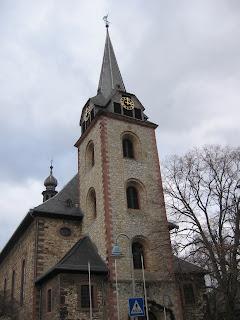 |
Thomas Joseph Flemming
1896-1918 |
Thomas Joseph Flemming is my great-great-uncle. Born in Birmingham, Alabama, on January 3, 1896, Tom was the youngest son of my great-great-great-grandparents
Charles Clinton Flemming (1854-1932) and
Elizabeth Agnes McCaffrey (1858-1922); my great-grandfather
Harry Clinton Flemming (1878-1955) was their oldest child of eleven.
On September 12, 1916, Tom married
Eleanor Catherine Smith (1896-1989). They lived in Birmingham and he worked for his father's business "Charlie's Transfer Company". No doubt they thought they had the whole world ahead of them.
In April 1917 Tom was required to sign up for the draft for World War I, along with all young American men between the ages of 21 and 31. He described himself on his registration card as "Short", "Stout" with "Dark" hair and eyes. There's so much more to Thomas Joseph Flemming, than this brief description, but most of the details have been lost to the ages.
What is known is that late in November 1918, Tom caught the flu. Normally, a young 22-year-old healthy man would feel bad for several days but would bounce back as good as new. But this wasn't the typical bout of influenza. This was the 1918 Global Flu Pandemic - also known as "The Spanish Flu". This was a variant form of the H1N1 Virus, the same type of flu as the 2009 "Swine Flu" pandemic.
Tom was sick with the flu for three days before he developed pneumonia - a characteristic of this kind of flu. He was staying at his parents' home during his illness. He suffered four more days with pneumonia before finally succumbing to the deadly virus on November 30, 1918. The notice of his death in the paper read:
T. J. FLEMINGS (sic)
Funeral services for Thomas J. Flemings, who died at the home of his father, Saturday afternoon at 2 o'clock, will be held from the residence, 1115 St. Charles Street, South, Sunday 3 o'clock. Internment at Elmwood with Father J. E. Coyle officiating. He is survived by his father and mother, Mr. and Mrs. C. C. Flemings, and three brothers A. C. Flemings, Jr. and J. B. Flemings; two sisters Mrs. J. B. Thomas of Birmingham, and Mrs. D. R. Thompson, of Baltimore.
[December 1, 1918; Birmingham News]
World wide the "Spanish Flu" killed at least 3% of the world's population - that's at least 50 million people! Over 500 million people, or 27% of the world's population, were infected. Influenza usually kills the elderly, infants less than 2 years old, and those with compromised immune systems. But the Spanish flu's main victims were the young. Research using historic samples found in a victim preserved in Alaska's frozen environments in 2005 has revealed that the virus causes an over-stimulation of the immune system. This may be why young people, with a very healthy immune system were more likely to die. [Another odd fact about the pandemic is that flu typically is the worst during the winter, but the Spanish flu hit worst in summer and fall. . . just like the Swine flu.]
Tom was buried in Birmingham's
Elmwood Cemetery. His wife Catherine moved to Ohio soon after her young husband's death where she met her future husband.
What kind of man was he? What did he enjoy doing in his free time? What would his children have looked like? None of this is known, or will ever be known, because he died so young. But now he hasn't been completely forgotten.










